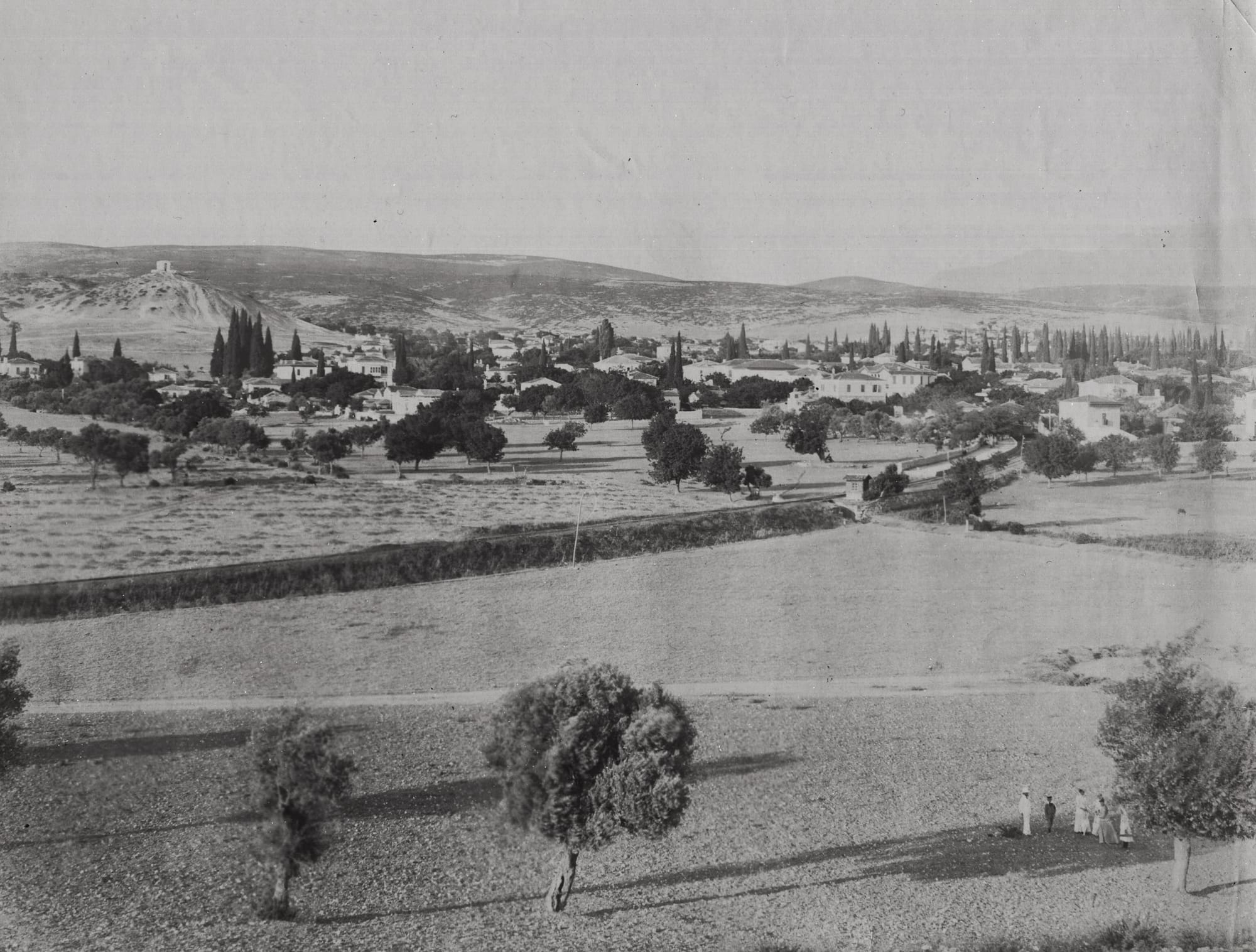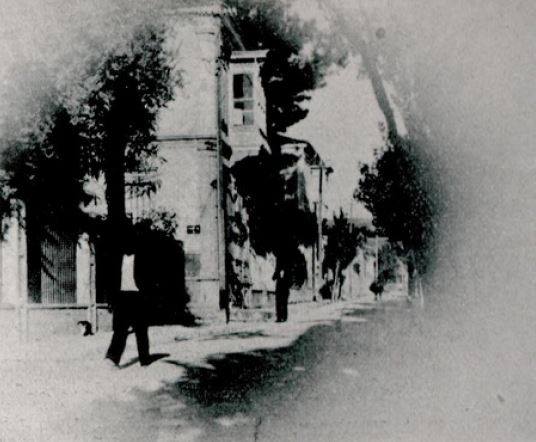BUCA BEFORE 1922

Buca settlement, a little outside of Izmir, turned into one of the suburbs of Izmir in the 19th century. The growth of Buca started with the arrival of immigrants from the Peloponnese after the Orlov Revolt in 1770. Buca became one of the wealthiest suburbs of İzmir with its significant Greek population, society, private schools and colleges at the end of the 19th and the beginning of the 20th century.
Buca was attached to the Izmir district governorship and Aydın province and was within the historical Ionian region. Other names used for Buca were Voutzas (Βουτζάς) and Voutsas (Βουτσάς).
1. Growth
Located on the southern skirts of Nif Mountain, Buca is 9 km from İzmir. We do not have any information about the beginning of the settlement of Buca. All we know is that it was a residential area with farmhouses during the Byzantine period. It was also the seat of a religious leader, according to Aristotle Fodriere. It was a village with a few houses and farmhouses until the Turkish Conquest and then 1770. The first phase of Buca's growth is the Orlov Revolt. During this period, immigrants from the Peloponnese settled in Buca. In addition to this, immigrants came from Chios, Kiterya and Andros Islands. The second development period started with the arrival of the Izmir-Aydin Railway line to Buca in 1861. Afterwards, the first Europeans started to come from İzmir for summer residence. In the 19th century, Buca began to fill with elegant houses and villas, and a theater was also built. Thanks to the development of transportation, it became an increasingly developed and permanent settlement at the end of the 19th century. People of İzmir have started to come to Buca not only for holidays but also permanently. In addition, this development in the 19th century did not affect agriculture. In the 18th and 19th centuries, various types of grapes, figs, almonds, fruits and olives were grown. Since 1880, tobacco has been regularly cultivated in the Buca Plain.
2. Population
Our information about the population of Buca dates back to the end of the 19th century and the beginning of the 20th century. With these data we can only comment a little. At the end of the 19th century, the population of Buca was around 6,000. For the beginning of the 20th century, the data differ from source to source. Although figures such as 6,000 are pronounced, according to most sources, the population of Buca has increased to around 12,000. In the 19th and 20th centuries, the majority of Buca was Greek. However, we do not have data on the Greek population and the population of other communities. Very little is known about Muslims. At the beginning of the 20th century, there were three Greek Orthodox churches, one Catholic and one Protestant church in Buca. The number of schools was similar. Buca had two public schools (one for girls and one for boys), several private schools, nine private English schools, one Catholic nuns' school and one Capuchin priest school. In the 20th century, most of the people in Buca were wealthy people from Izmir, or at least not bad people, and they lived in elegant houses. As the wealthy people of İzmir continued to come to Buca in the 19th century, Ottoman and European people in the middle and lower classes began to leave Buca.
 Buca Istasyon Caddesi, early 20th century
Buca Istasyon Caddesi, early 20th century
3. Greek Population
The only data we have on the Greek population in Buca is based on the statements of Greek immigrants from Asia Minor. According to these statements, Buca had a Greek population and a Kocabaşı (Christian leader) was chosen from among the elderly people in the population. At the end of the 19th and the beginning of the 20th century, the Greek population had two schools (a girl and a boy), three churches and a training school. In addition, there were a few private Greek schools and clubs. The oldest among the clubs was the Educational Brotherhood (Anagenisis) Club, founded in 1872.
According to the Greek Consul Stamatios Antonopoulos at the beginning of the 20th century, it was impossible to understand Izmir alone, ignoring the relations in the surrounding settlements. Izmir and the surrounding settlements were closely connected to each other.
Translated from Greek to Turkish by atalarimizintopraklari.com
Source: syllogosneouvoutza.blogspot.com